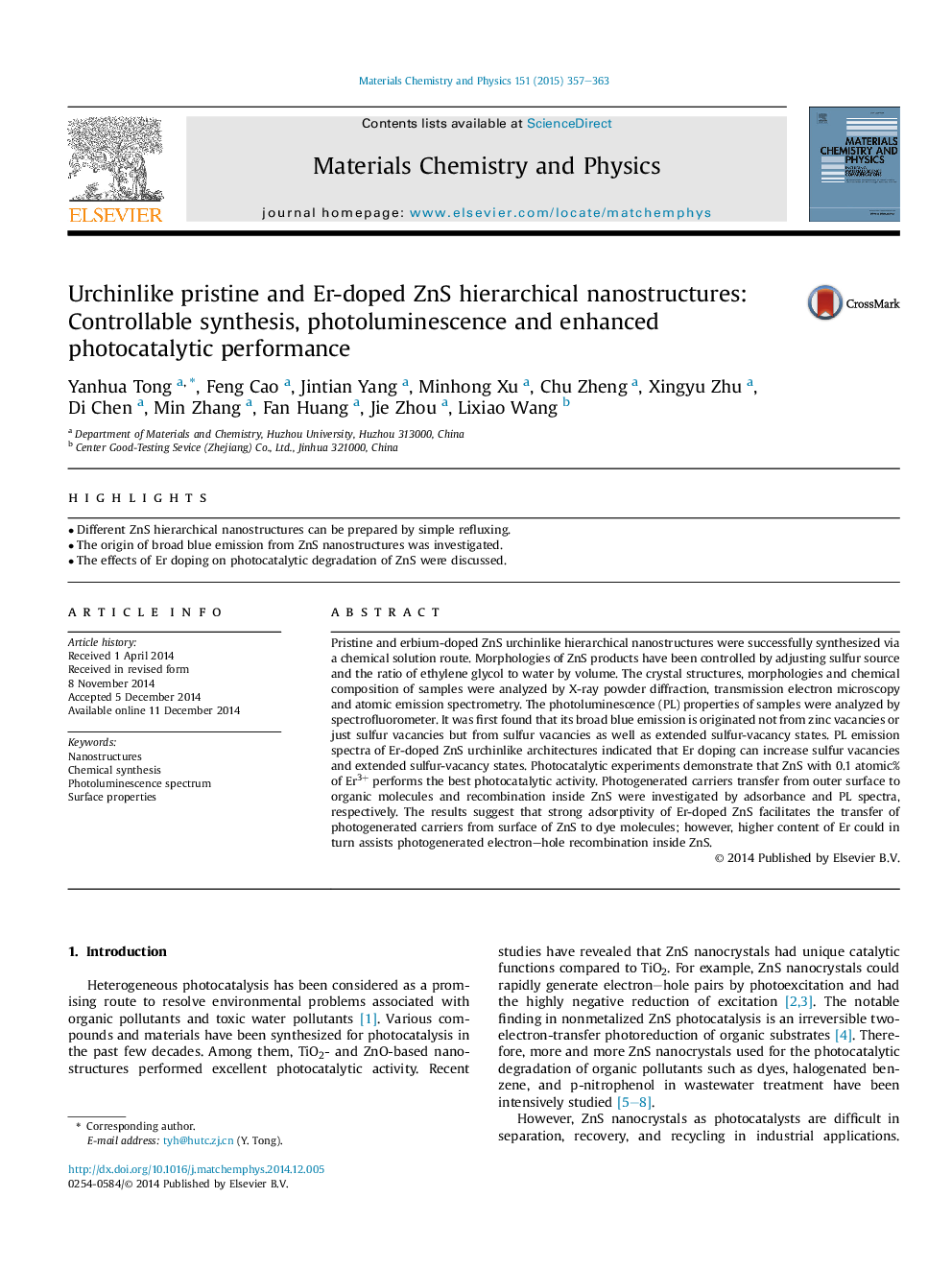| Article ID | Journal | Published Year | Pages | File Type |
|---|---|---|---|---|
| 1521643 | Materials Chemistry and Physics | 2015 | 7 Pages |
Abstract
Pristine and erbium-doped ZnS urchinlike hierarchical nanostructures were successfully synthesized via a chemical solution route. Morphologies of ZnS products have been controlled by adjusting sulfur source and the ratio of ethylene glycol to water by volume. The crystal structures, morphologies and chemical composition of samples were analyzed by X-ray powder diffraction, transmission electron microscopy and atomic emission spectrometry. The photoluminescence (PL) properties of samples were analyzed by spectrofluorometer. It was first found that its broad blue emission is originated not from zinc vacancies or just sulfur vacancies but from sulfur vacancies as well as extended sulfur-vacancy states. PL emission spectra of Er-doped ZnS urchinlike architectures indicated that Er doping can increase sulfur vacancies and extended sulfur-vacancy states. Photocatalytic experiments demonstrate that ZnS with 0.1 atomic% of Er3+ performs the best photocatalytic activity. Photogenerated carriers transfer from outer surface to organic molecules and recombination inside ZnS were investigated by adsorbance and PL spectra, respectively. The results suggest that strong adsorptivity of Er-doped ZnS facilitates the transfer of photogenerated carriers from surface of ZnS to dye molecules; however, higher content of Er could in turn assists photogenerated electron-hole recombination inside ZnS.
Related Topics
Physical Sciences and Engineering
Materials Science
Electronic, Optical and Magnetic Materials
Authors
Yanhua Tong, Feng Cao, Jintian Yang, Minhong Xu, Chu Zheng, Xingyu Zhu, Di Chen, Min Zhang, Fan Huang, Jie Zhou, Lixiao Wang,
